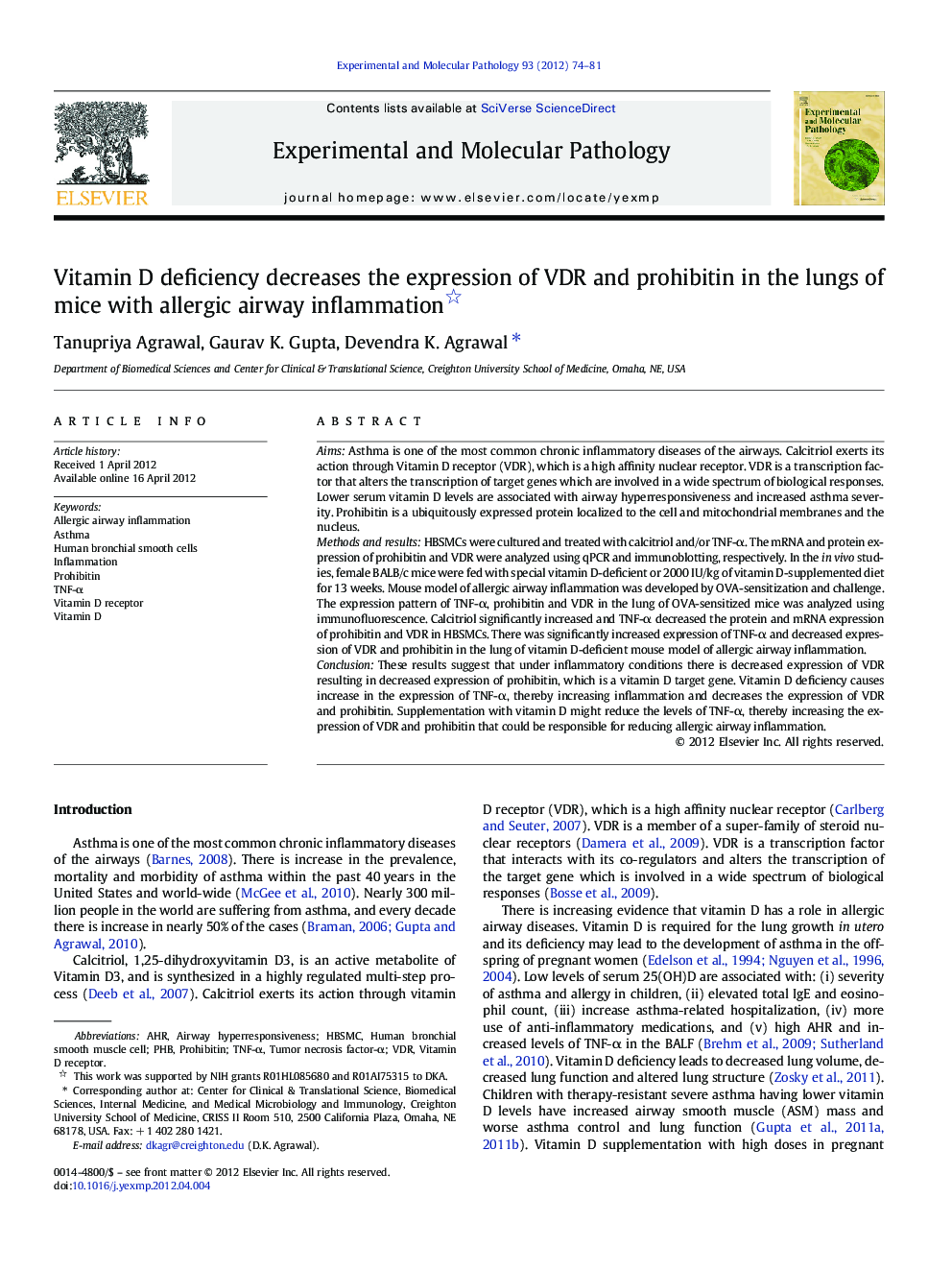| Article ID | Journal | Published Year | Pages | File Type |
|---|---|---|---|---|
| 2775399 | Experimental and Molecular Pathology | 2012 | 8 Pages |
AimsAsthma is one of the most common chronic inflammatory diseases of the airways. Calcitriol exerts its action through Vitamin D receptor (VDR), which is a high affinity nuclear receptor. VDR is a transcription factor that alters the transcription of target genes which are involved in a wide spectrum of biological responses. Lower serum vitamin D levels are associated with airway hyperresponsiveness and increased asthma severity. Prohibitin is a ubiquitously expressed protein localized to the cell and mitochondrial membranes and the nucleus.Methods and resultsHBSMCs were cultured and treated with calcitriol and/or TNF-α. The mRNA and protein expression of prohibitin and VDR were analyzed using qPCR and immunoblotting, respectively. In the in vivo studies, female BALB/c mice were fed with special vitamin D-deficient or 2000 IU/kg of vitamin D-supplemented diet for 13 weeks. Mouse model of allergic airway inflammation was developed by OVA-sensitization and challenge. The expression pattern of TNF-α, prohibitin and VDR in the lung of OVA-sensitized mice was analyzed using immunofluorescence. Calcitriol significantly increased and TNF-α decreased the protein and mRNA expression of prohibitin and VDR in HBSMCs. There was significantly increased expression of TNF-α and decreased expression of VDR and prohibitin in the lung of vitamin D-deficient mouse model of allergic airway inflammation.ConclusionThese results suggest that under inflammatory conditions there is decreased expression of VDR resulting in decreased expression of prohibitin, which is a vitamin D target gene. Vitamin D deficiency causes increase in the expression of TNF-α, thereby increasing inflammation and decreases the expression of VDR and prohibitin. Supplementation with vitamin D might reduce the levels of TNF-α, thereby increasing the expression of VDR and prohibitin that could be responsible for reducing allergic airway inflammation.
